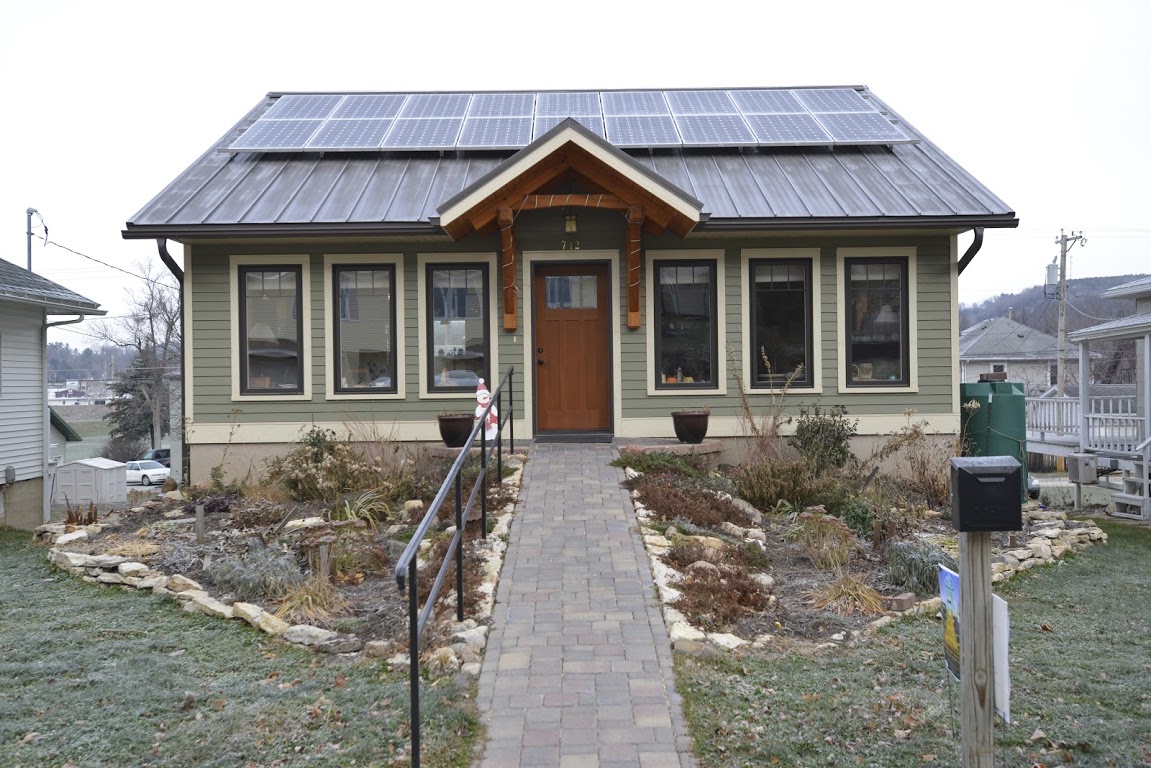Use these easy and inexpensive energy saving tips as your first steps to make your home more comfortable, efficient, and earth friendly.
Renters
These measures are temporary/reversible and safe to do without your landlord’s consent.
Lighting
Replace old incandescent light bulbs with LED light bulbs to save about 20- 30% on your lighting bill. New styles come out every day so you should be able to find a bulb to fit even ceiling fan lights or old fixtures with pleasing lighting quality.
Homeowners and Some Renters
This list is for homeowners who are certain that their home is drafty and renters who have landlord’s consent to do air sealing. Not sure if your home is safe to seal? Contact the Winneshiek Energy District to perform an energy audit.
Seal Air Leaks
Sealing air leaks may save you 20% on heating and cooling!
Cold weather plastic over windows
Did you know that adding plastic on your windows has the same insulation value as adding a pane of glass? While temporary, installing seasonal plastic over your windows cut down drafts from old windows and incrementally increase the insulation value. Note: homes that are too tight should not use this air sealing measure.
Insulate Outlets on exterior walls
Purchase inexpensive foam insulators and install behind outlet covers on exterior walls. Note: homes that are too tight should not use this air sealing measure.
Find the leaks. On a windy day feel around doors, windows, outlets. Try using a stick of burning incense to spot drafty spots. Also check ceiling fixtures and recessed lighting for drafts.
Gather your supplies. You’ll need clean rags, rubbing alcohol, a caulk gun, clear or paintable caulk, liquid spray foam (expanding foam), weather tripping, rigid pink or blue foam, foam gaskets for sockets and light switches, utility scissors or knife, screwdriver, a and a step ladder.
Seal the leaks, starting in the basement.
- Repair broken or missing window pains.
- Install rigid foam over openings.
- Seal gaps around vent exhausts with caulk or expandable foam.
- Seal cracks between top of foundation and the ceiling/wall. (Turn off basement lights to see daylight come through.)
- Insulate cavity formed by the floor joists with batt or blanket insulation or rigid board insulation or expanding foam.
- Use liquid foam insulation to seal large gaps, trim off excess once dry.
- Clean surface before caulking; use vacuum, wipe down with alcohol.
- Tape heating and cooling ducts using mastic sealant – a paste painted over seams between sections of metal ductwork (ducts are the only thing duct tape does not stick to!)
Walls, Ceilings, and Doors
Use paintable caulk to seal around doors, windows, and baseboard cracks.
Use foam gasket insulators (found at hardware stores) on outlet switches. Be sure to turn off power before removing screws. It’s also a good idea to plug unused sockets with protective child-proof covers.
Recessed ceiling lights and whole house fans; replace leaking can lights with air tight fixtures. Make an air tight cover over whole house fan with pink rigid board.
Windows
Use self adhesive vinyl V strip weatherstripping or rope caulk, removable putty like cord comes in a roll. Apply in winter and remove in spring if you want to pen window. (wipe down windows before applying).
Doors
Weather stripping on top and bottom of door. Remove any old weatherstripping and clean surface well, wipe with rubbing alcohol to remove residue. Apply self-adhseive foam strips. Cut foam from roll with scissors and apply to clean dry surface. OR Install metal V-strips; these are nailed down using tacks and are more durable on doors.
Attic Door
These are often unsealed or uninsulated. Glue a 2 – 4″ layer of rigid polystyrene foam (pink or blue board) to the back of the attic door. Apply a self adhesive foam weather stripping along the perimeter.

